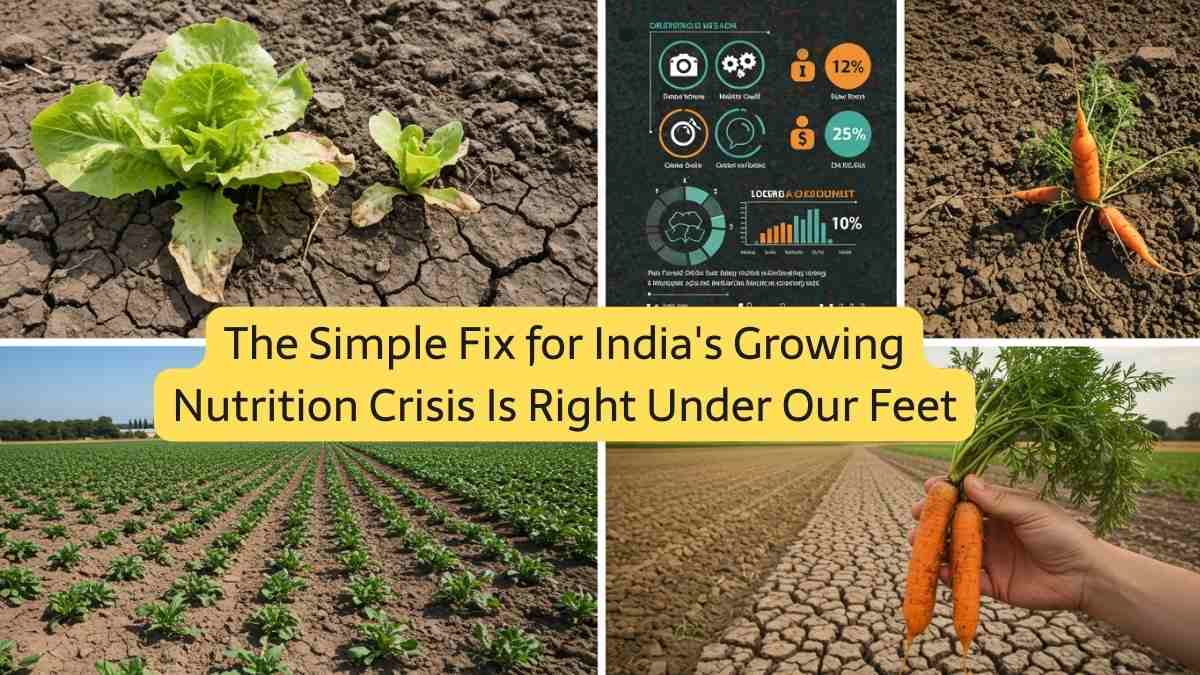Why Healthy Soil is the Key to India’s Food and Nutrition Security
You may have noticed fewer earthworms in the fields lately, especially during the monsoon season. This isn’t just a random observation; it’s a clear sign of a growing problem. India’s soil is facing a health crisis, which directly impacts the quality of our food and the well-being of our children. The very foundation of our nation’s food supply is at risk.
Across the country, agricultural lands are struggling with degraded soil, shrinking water resources, and fragile ecosystems. This situation requires us to rethink our farming practices to build a more sustainable and secure future.
The Hidden Crisis Beneath Our Feet
The health of a nation’s soil is like its hidden treasure, but right now, India is dealing with a severe shortage of essential nutrients. This isn’t just a problem for farmers—it affects every single one of us.
Consider these facts:
-
Missing Micronutrients: About 40% of Indian soil lacks vital micronutrients like zinc and iron. If these nutrients aren’t in the soil, they can’t be in our food.
-
Declining Efficiency: In the last 50 years, our nutrient use efficiency has dropped by nearly half. In the 1960s, one kilogram of fertilizer could produce 12 kilograms of grain. Today, it yields only 2.2 kilograms.
-
The Impact on Health: This nutrient depletion has serious consequences. In India, 32% of children under the age of five are stunted, and this figure rises to 35% for children between five and nine.
Smarter Farming as the Solution
The good news is that solutions are within our reach. The way forward involves a more scientific and technology-driven approach that places the farmer at the center of all efforts.
The 4R Nutrient Model
A simple yet powerful solution is the 4R Nutrient Stewardship model. It’s all about precision agriculture:
-
Applying the Right nutrient
-
At the Right rate
-
At the Right time
-
In the Right place
This approach ensures resources are used efficiently, which benefits the farmer’s pocket and minimizes environmental impact.
Technology on the Farm
India’s digital expansion presents a massive opportunity. With better internet access in rural areas, farmers can now use mobile apps and online platforms to make informed decisions. This “phygital” approach connects them with expert advice, real-time weather forecasts, and market data, helping them manage their soil and water resources more effectively.
A Real-World Success Story
To see this in action, we can look at the South Region Pomegranate Growers Producer Company (SRPG FPO) in Karnataka. They were struggling with poor fruit quality due to unbalanced soil nutrition.
By adopting balanced nutrition plans and receiving better training, they managed to increase their business volume fourfold between 2022 and 2024. The quality of their fruit improved so dramatically that it began attracting buyers for export. This story is a perfect example of how scientific methods can lead to tangible success.
What Needs to Happen Next
India has made incredible progress, moving from a food-deficit nation to a major exporter of rice. However, our farm productivity is still 40-50% below the global average. There is significant potential for growth through better soil management and precision agriculture.
To unlock this potential, a three-pronged strategy is needed:
-
Supportive Policies: The government should create policies that encourage innovation and shorten the long approval timelines for new agricultural products.
-
Innovative Solutions: We need to develop new products and solutions tailored to specific soil and crop challenges.
-
Farmer-Centric Approach: All solutions must be designed to make farmers more profitable while protecting the environment for future generations.
By investing in soil health, digital tools, and farmer empowerment, India can secure a future where it can produce food sustainably and responsibly.
Updated on August 23, 2025 with latest context.



